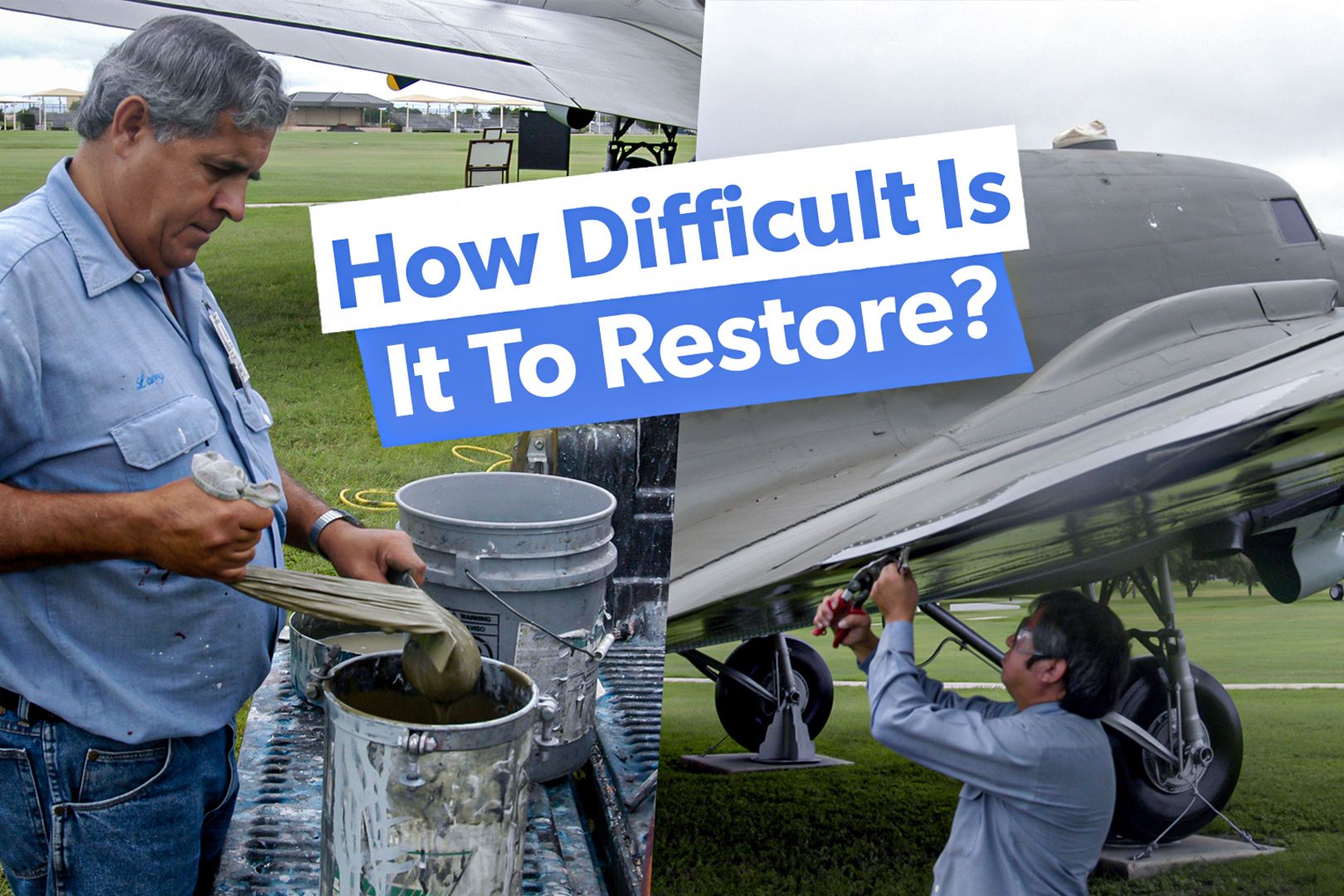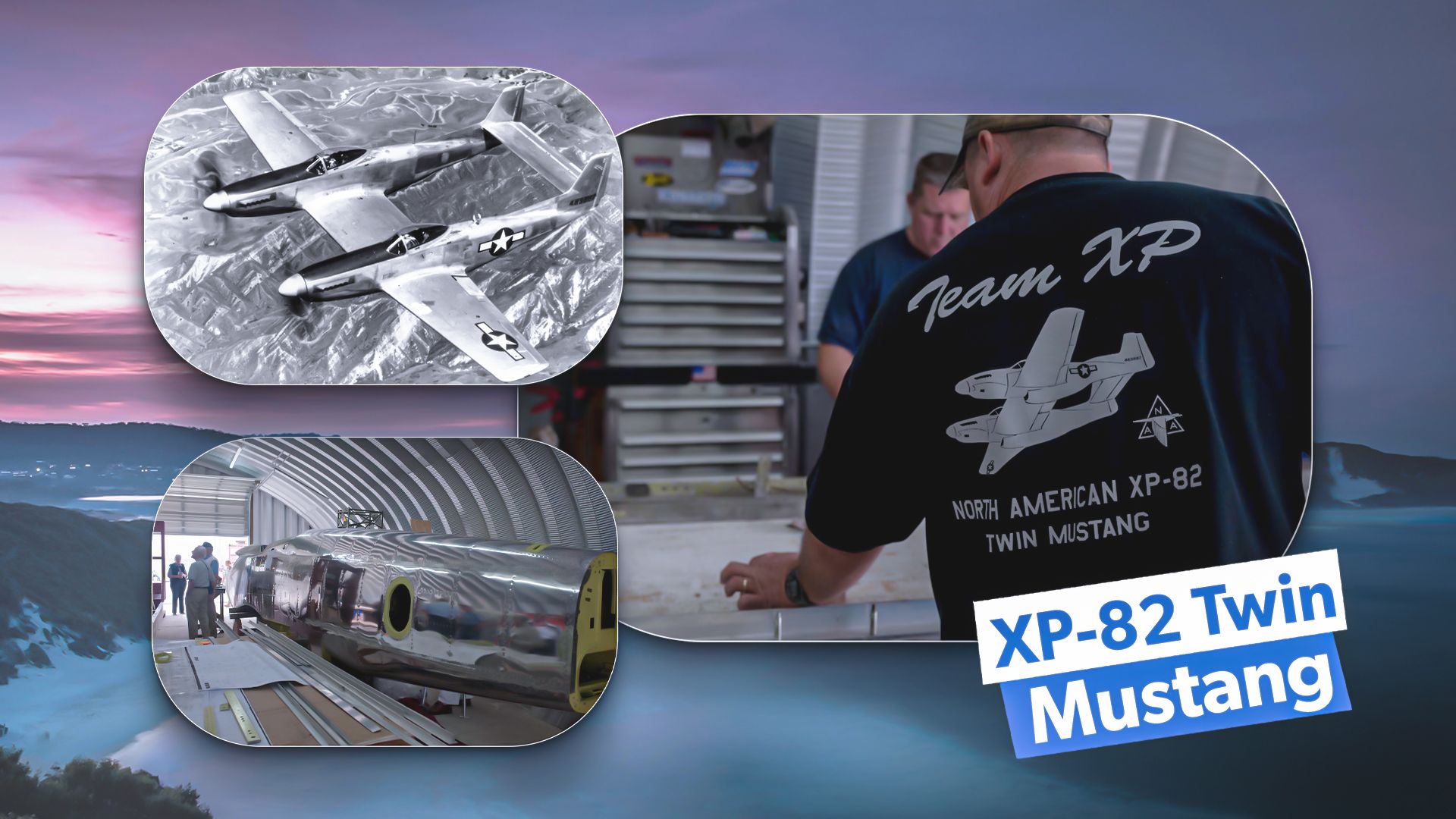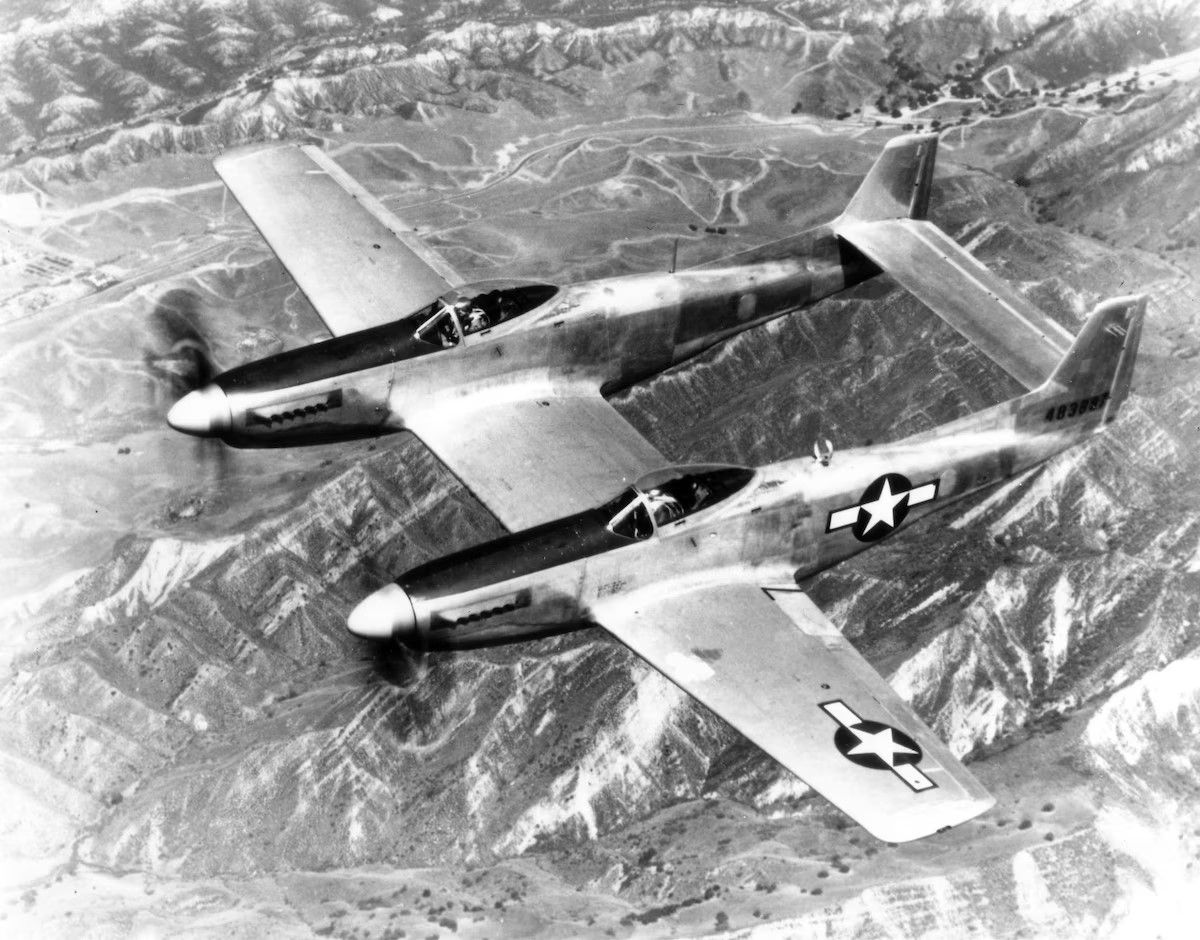Summary
- WWII aircraft restoration projects are extremely challenging but rewarding.
- Some restoration projects aim to preserve battle scars for authenticity.
- Restoring rare aircraft like the F-82 Twin Mustang poses unique challenges.
I’m a big-time admirer of vintage military aircraft restoration projects. And not just for the personal joys I’ve derived from riding airworthy WWII warbirds such as a B-17 Flying Fortress and B-25 Mitchell AKA PBJ (though that certainly helps). These restoration projects help keep aviation history alive in tangible form, as opposed to just an abstract passage in a textbook or a clip of grainy octogenarian newsreel footage.

Related
How Difficult Is It To Restore A WWII Plane?
Quite difficult, but ultimately rewarding: Simple Flying gets some firsthand perspectives on these worthwhile projects.
However, these worthwhile WWII aircraft restoration projects were extremely challenging. In this article, we’ll examine the nature of these challenges.
Some personal acquaintances’ perspectives
My Facebook friend, Kent Lentz, is a former aircraft restorer at Ed Maloney’s Planes of Fame Air Museum in Chino, California. Kent’s pride and joy is a P-40B Tomahawk bearing Serial No. 41-13297. It is the oldest P-40 in existence and the only American fighter plane that was at Pearl Harbor on December 7, 1941 remaining. Kent shared comments on the preservation efforts:
“Most people have no idea what goes into these warbird resurrections. When you get a group of folks that risk everything they have, including their lives, in order to honor a fallen hero and preserve accurate and significant history, it’s way beyond a simple hobby, especially when it’s a non-profit project…It’s just me, but I feel as though a tiny bit of the spirit of every pair of hands that helped build these planes stays with them. Project Tomahawk spent 18 years remanufacturing P-40B 41-13297 to honor the pilot that died in her crash -Lt. Kenneth Wayne Sprankle- who sacrificed his life on Jan. 24 1942.”
Then there’s my LinkedIn Connection, Rob Harvan of Commemorative Air Force (CAF), arguably the preeminent aircraft restoration organization in the United States of America, if not the world. Among Rob’s most profound comments:
“Anything you plan to do will take longer and cost more than you think. Be creative about how to restore a warbird.”
Preserving battle scars
When vintage aircraft restorers apply their handiwork, they try to restore the planes to pristine condition. They fix the holes, scratches, and dings to make them look as fresh and renewed as possible for the viewing public, whether for museum static display or airworthy status. But back in June 2015, Michelle Z. Donahue of Smithsonian Insider shared the story of at least one WWII aircraft restoration team thinking outside the box and taking an opposite approach: preserving those battle scars for an extra degree of authenticity and historical posterity.
The plane in question was a Martin B-26 Marauder medium bomber – appropriately nicknamed “Flak-Bait” – which survived 207 bomb runs during its WWII service, thus flying more missions than any other American plane in the conflict. (To put that statistic in perspective, the average service life of a typical B-26 Marauder was between 15 and 20 missions.) Two of those sorties took place during D-Day.

Related
D-Day 80th Anniversary: The Key Role Of Airpower In The Allies’ Success
Today is the 80th anniversary of D-Day, with airpower having played a crucial role in the success of this Allied effort.
“Flak-Bait” ended up at the Smithsonian in 1960. Fast-forward to 2015, and Ms. Donahue picked up the story from there:
“Ah, that new car smell. New plane smell is nice, too. Bright and shiny and fresh is good, right?… Sure, unless it is a very special World War II bomber, covered in hard-earned dirt and grunge, bullet holes and riveted repair patches. To remove these would be erasing classic historical battle scars…That’s the challenge staff at the Smithsonian’s National Air and Space Museum now face while resurrecting Flak-Bait, a Martin B-26 Marauder in the Mary Baker Engen Restoration Hanger at the Steven F. Udvar-Hazy Center in Chantilly, Va. Team leader Pat Robinson, museum specialist Chris Moore, and conservators Lauren Horelick and Malcolm Collum are analyzing paint composition, stabilizing paint layers and excavating layers of grime to sustain the plane’s gritty, tough character for decades to come.”
Among the noteworthy examples of that “essence and authenticity” were dozens of patched bullet and shrapnel holes – among them a German round lodged in the panel beneath the radio operator’s seat (which appears in the above Photo Gallery – and panels bearing thousands of penciled autographs by people who recognized the plane’s celebrity status at the end of the war and wanted to be part of posterity (also pictured in the Photo Gallery).
“There are planes that did see combat but were completely restored, so the essence of what they experienced during World War II is gone,” says Jeremy Kinney, curator of American military aviation at the Air and Space Museum.
Hence, the author describes the need for “a meticulously judicious and often scientific cleaning.” It is the search for a happy and elusive middle, “cleaning away grimy dust” on the one hand, “yet preserving the oil-spattered patina ejected from the plane’s notoriously thirsty engines” on the other.
“Flak-Bait is a true time capsule of that time. We want to maintain its essence and authenticity.” – Jeremy Kinney, Air and Space Museum.
There was also a complication pertaining to the paint job: to save weight, “Flak-Bait” hadn’t been covered in primer before its 1943 factory paint job. So, by 2015, the paint was flaking away from the bomber’s aluminum body:
“As conservators on the project, Horelick and Collum will start a methodical study of the plane’s various paints in the fall, both by analyzing it chemically, and under a microscope. To consolidate, or reaffix paint that’s threatening to flake off the underlying metal, Horelick must also determine what sort of material to use that will make it stay put, but won’t alter the covering’s appearance…To simulate how the plane will age in varying levels of light, temperature and humidity, researchers can use artificial aging chambers that mimic the array of stresses the plane will undergo during the next 100 years of exhibition.”
“And conservation doesn’t end when the project is finished. As the team makes decisions, they must consider how the plane will be cared for in the future—factors that affect decisions for the materials they choose to accomplish conservation today.”
Fast-forward to the present day, and according to the National Air and Space Museum‘s current info page, the preservation project for “Flak-Bait” is going strong.
The B-26 Marauder is not to be confused with the Douglas A-26 Invader light bomber, which coincidentally was also the subject of another one of my WWII aircraft restoration articles (and which, to make matters a tad more confusing, was in turn redesignated the B-26 between 1948 and 1965 [though the Marauder had already been retired when this change took place].)
The rarer the (war)bird, the tougher the task
It’s challenging enough to restore a vintage aircraft of a type of which a fairly substantial number of specimens have survived, such as the B-17, the P-51 Mustang, or the F4U Corsair. It’s even tougher when you have a rarer bird, a type of which there are very few survivors. A prime example is the P-51’s direct descendant, the North American F-82 Twin Mustang. This aircraft made its maiden flight in June 1945, two months before WWII ended, but didn’t actually see combat action until the Korean War. It killed the first three North Korean aircraft to be destroyed by American forces during that war.
Only five Twin Mustangs survive today, but none were airworthy until sometime in the previous decade. That finally changed thanks to the dedication of Tom Reilly and his restoration team. Back in December 2011, Airman 1st Class Jarrod Grammel of US Air Force Air Combat Command (ACC) 23rd Wing Public Affairs interviewed Mr Reilly and his crew:
“‘We are building the rarest aircraft in the world,’ said Reilly, owner of the B-25 Group which restores vintage aircraft. ‘There are only five Twin Mustangs in the world today, and only two in civilian hands. This one has the tail number 44-83887, the prototype and first one to fly’… ‘There is not a single Twin Mustang that flies today, and this is the prototype so it’s especially rare,” said Don Brooks, fellow aircraft restoration expert…
“‘The XP-82 has many unique parts such as a counter-rotating engine and propeller. Also, only the early models of the P-82 had full control panels in both fuselages. Finding aircraft parts is the most challenging part of aircraft restoration,’ Reilly said. ‘I went around the world collecting parts and what we couldn’t find we had to rebuild completely.'”
Fast-forward to the present day, and it looks like Tom Reilly’s restoration story has a happy ending: the restored plane finally flew again on December 31, 2018. It is currently on loan in flying condition to the Valiant Air Command Warbird Museum at Space Coast Regional Airport in Titusville, Florida.
There’s one other F-82 undergoing an effort to restore to flying status: an F-82E bearing Tail No. 46-0256, which, according to the most recent report on the SilverHawkAuthor website, was situated at the Walter Soplata farm in Newbury, Ohio.


